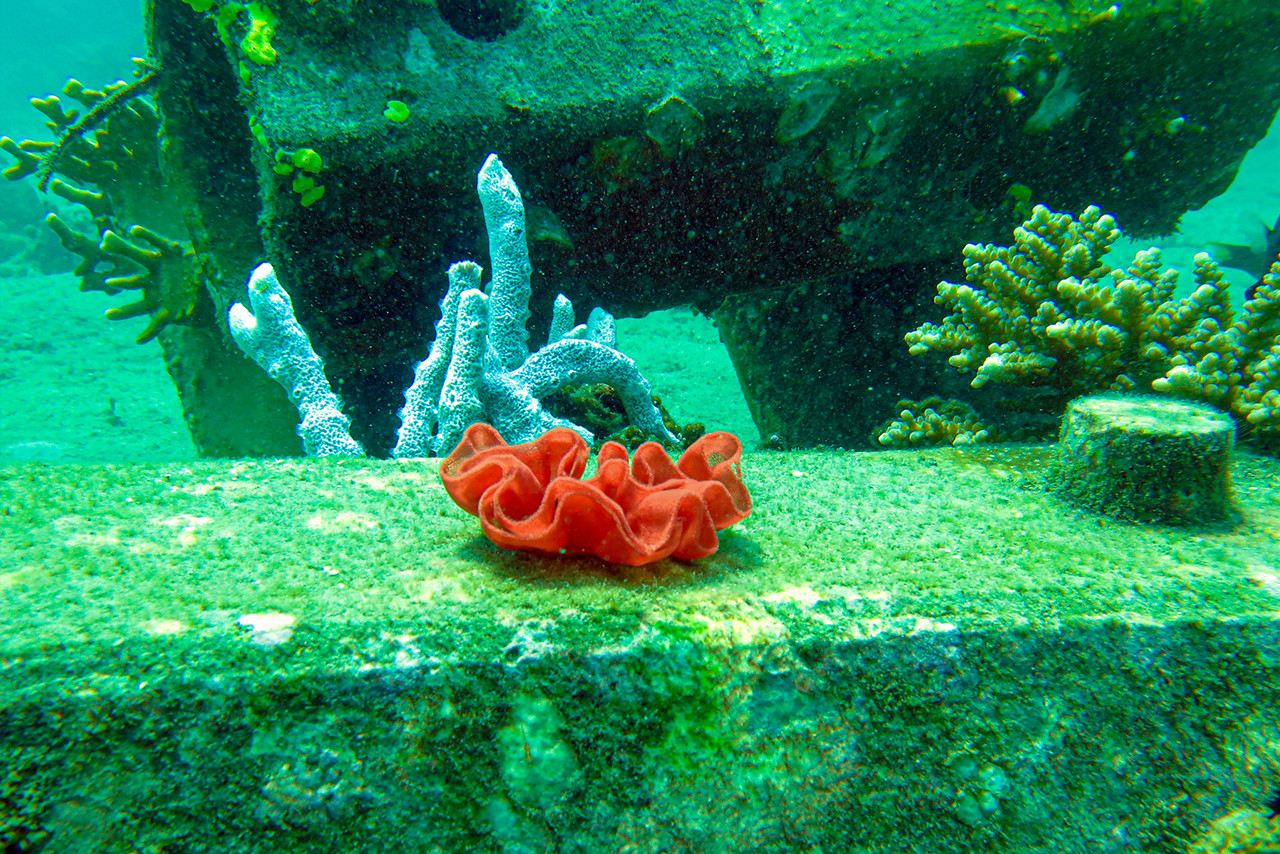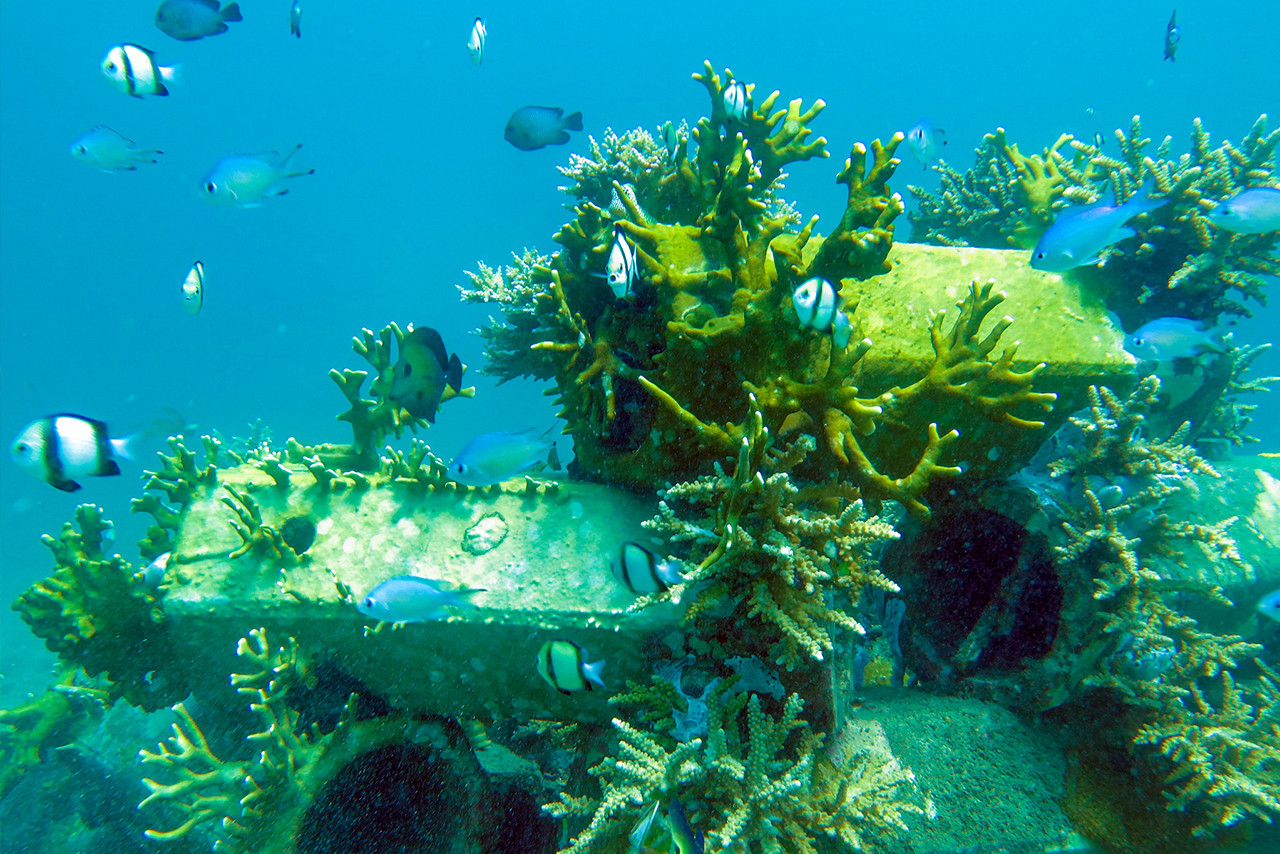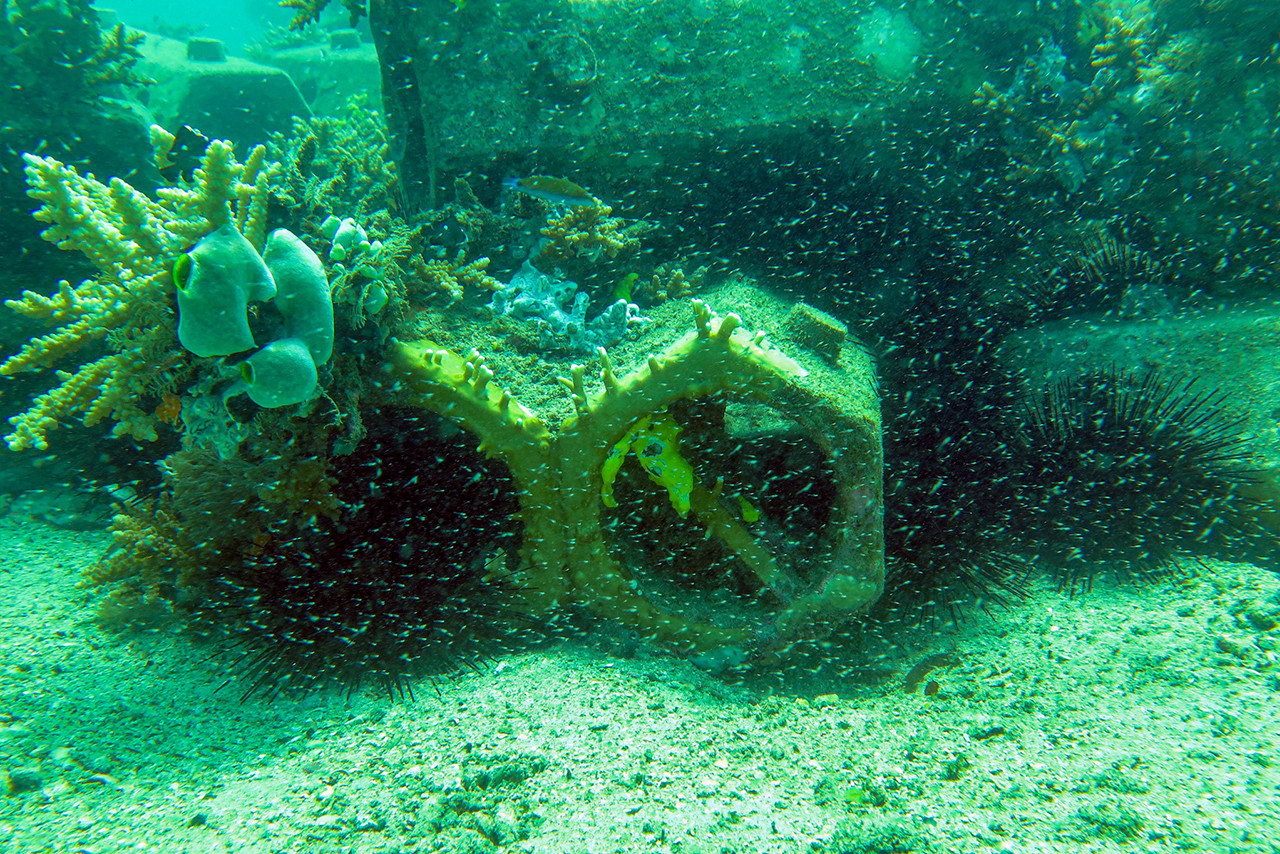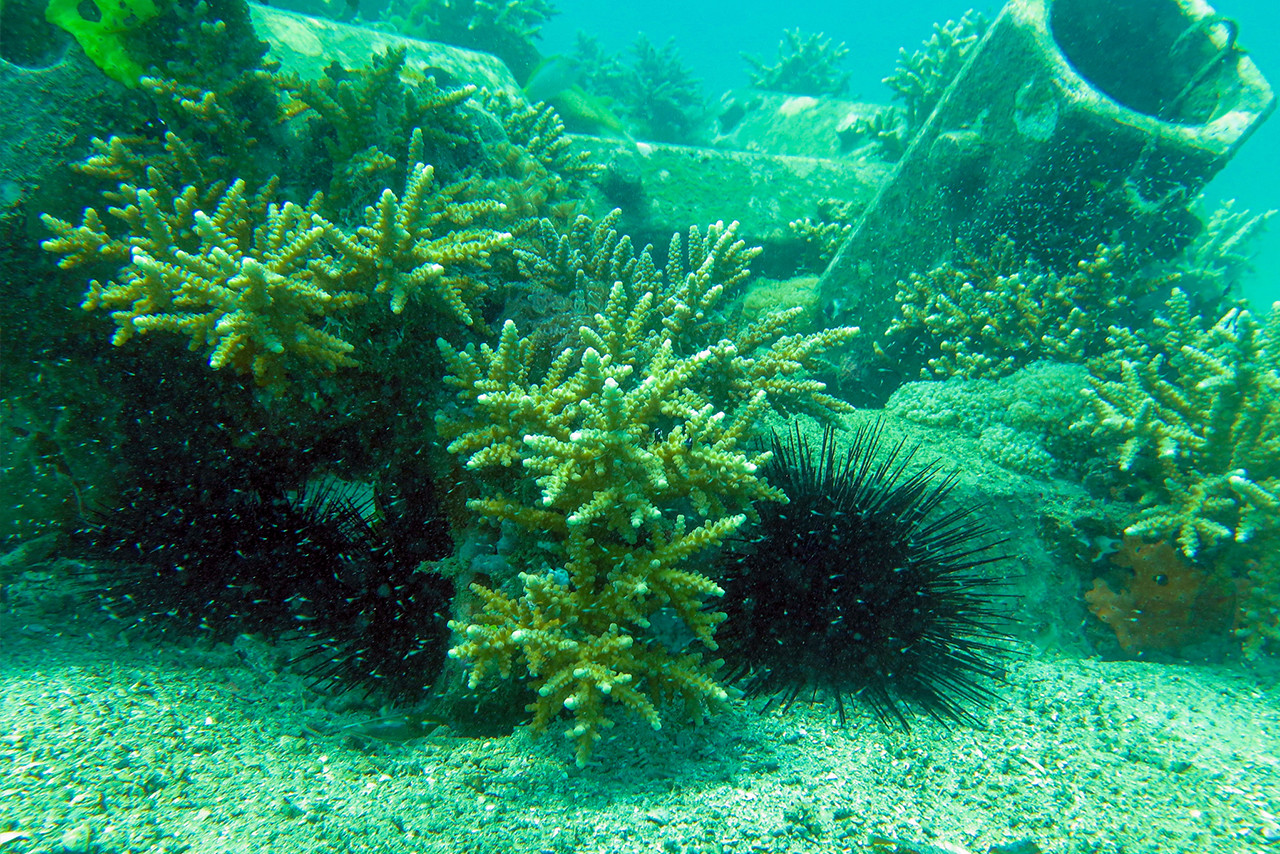The Boskalis Artificial Reefs Program is having a colorful year. Both literally, with the growth of fully-fledged coral colonies on the artificial reefs offshore Kenya, and figuratively, with the first application of a modular artificial reef that serves as a breakwater in the Netherlands.




About two years ago, ninety cylindrical reef blocks were installed off the coast of Shimoni in Kenya. The blocks, 20 kilograms each, are almost unrecognizable now. Indeed, passing divers see a fully-fledged coral reef, full of marine life including fish and sponges, as in the surrounding coral reefs.
One reason is that, when the artificial reef was installed, coral cuttings were placed on it. These small corals – the first life on the reef – were intended to attract new coral and marine life. That plan worked perfectly. “This artificial reef has been a major success. In part because of the good results, our partner ReefSystems has been able to further expand the project with another 1,600 reef blocks,” says Boskalis’ program lead Paul Peters. “With the Boskalis Artificial Reefs Program, we have been very much involved in making this pilot project possible. ReefSystems has now established a local facility for the production of the reef blocks, known as Modular Sealife System (MOSES). This facility furthers local involvement, knowledge and expertise, and it helps with the upscaling of future reef restoration in this region.”
The artificial reef off the coast of Shimoni is an exceptional project for the Boskalis specialists working on the company’s Artificial Reefs Program (ARP). After the installation of an artificial reef offshore Monaco, where there is a mild Mediterranean climate, the project in Kenyan waters was the first tropical application of the program. “Conditions in Monaco and Kenya are very different. So although we had already learned a lot in Monaco, we came across entirely new challenges in Kenya. We are proud that this application has achieved the goals in Kenya: a strong boost for coral growth, biodiversity as well as successful prospects for the future of ongoing reef restoration through upscaling.”
Rotterdam Reef Project
One factor that Monaco and Kenya do have in common is the clarity of the sea water. The situation in the port area of Rotterdam is very different: large numbers of cargo vessels pass by every day and the water is already a lot more turbid by nature. Even so, the Boskalis crane vessel Kreeft installed an artificial reef in the Nieuwe Waterweg shipping lane in the port of Rotterdam as well early this year: an innovative, modular structure consisting of seventeen 6.5 ton Lego-like reef blocks. A world first on a grand scale. This structure not only encourages biodiversity, it directly protects the fragile banks from the wave impact of passing vessels due to its strategic location in the canal.
The Rotterdam Reef Project – an alliance with the Dutch start-up Reefy, the city of Rotterdam and Rijkswaterstaat (the Dutch Directorate General for Public Works and Water) – is the first ARP application in the Netherlands. Peters: “It’s a special feeling when something you have worked on with colleagues for so long is put into practice and tested in the real world. This step is not the final goal; it’s just the start of the large-scale application of these modular artificial reef blocks designed and manufactured by Reefy. The project wouldn’t have been possible without the close collaboration inside and outside the Boskalis organization to create something innovative together.”
